People of the U: Marcus Blanton
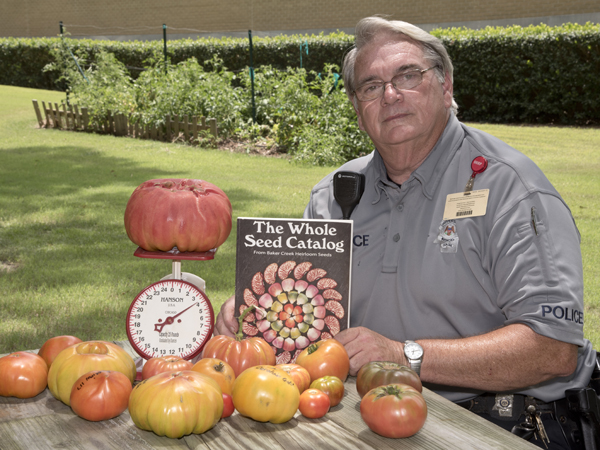
There are almost countless varieties of heirloom tomatoes on God's green earth, and Marcus Blanton is out to find the very best one.
That's no small quest for a man who has personally raised approximately 200 different kinds of tomatoes this year alone at his Carthage residence and has tasted at least 700 varieties.
The campus police officer's lifelong passion for gardening was sown by his
grandmother, who instilled a deep love and respect for nature's bounty.
"She loved to raise flowers and vegetables," he said. "It just came naturally. I always had a garden, because I always thought I had to have one."
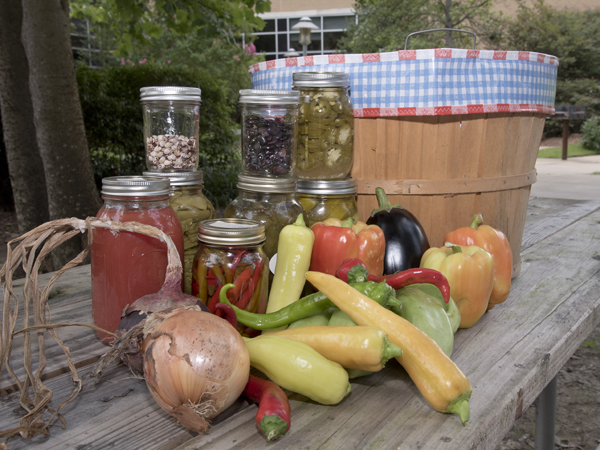
The garden he has carved alongside the town's Main Street may only be a city lot square, but it produces a cornucopia of fresh fruits and hardy vegetables each season: peppers, beans, eggplant, onions, collard greens, turnips, cabbage, lettuce varieties and carrots, just to name a few.
But tomatoes are the somewhat unexpected raison d'etre of his garden, considering his early experience with the fruit.
"I had never cared for tomatoes - tasting them was like sticking your tongue to a car battery," Blanton said. "I didn't like them."
A handful of Brandywine Heirloom Tomato seeds he acquired shortly after moving to Carthage in 1992 changed his mind.
"When my Brandywine matured, I tasted a sample of it. It was buttery, succulent, it had a slight sweet taste. It was my first great tomato - what I had wanted all along.
"I was like Archimedes - I wanted to tell the world, 'I've found it!'"
In a way, with the assistance of Dr. Steve Watson, associate professor of health sciences in the School of Health Related Professions, he has done just that.
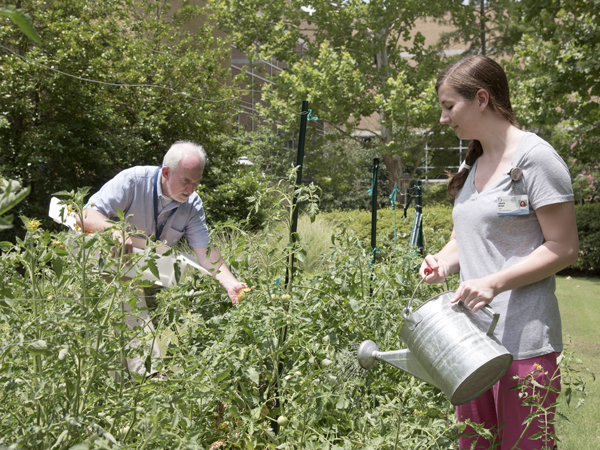
Like Blanton, Watson was introduced to gardening as a child: Watson would walk the rows behind his grandfather while he guided a mule-drawn plow at his Morton farm. An amateur gardener himself, Watson would take notice of the variety of vegetables Blanton would bring to the SHRP building to share from his garden.
"Marcus had beautiful, odd-looking tomatoes, some of the strangest things you'd ever laid eyes on," Watson said.
During one winter, the pair decided to start tomato seeds under a grow light in the school. SHRP students began to take notice and to ask questions.
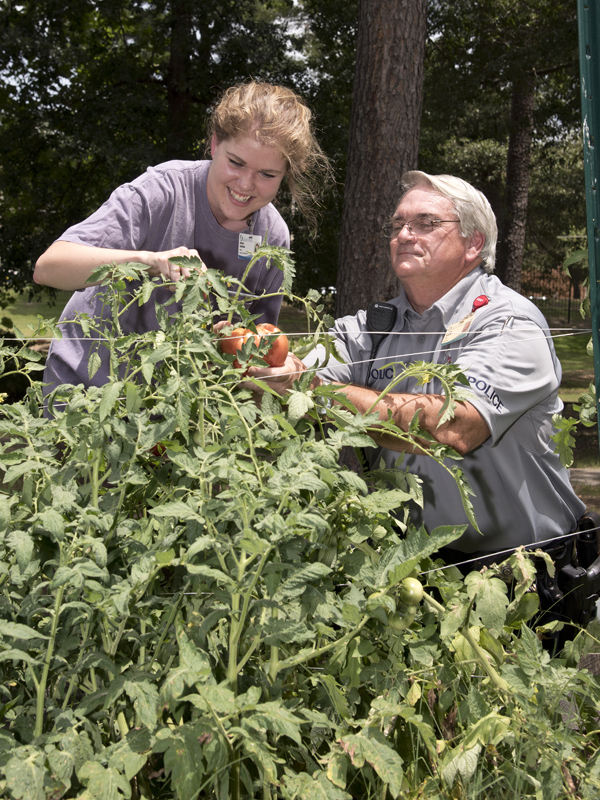
"They would see Marcus bring in tomatoes, squash and corn from his garden, and I began to think, 'With SHRP focused on making Mississippi a healthier place, how could we connect what we teach in the classroom to the core of Mississippi's agrarian society?'" Watson said.
The result is the school's first therapeutic horticulture club. Last spring, Blanton, Watson and several SHRP students formed a garden area on the northwest quadrant of campus alongside the SHRP building.
Scavenged pallets from a campus loading dock and composted hay bales now yield dozens of varieties of lush green plants brimming with soon-to-be-ripe fruits, small and large. A "sunflower wall" stretches across the brick on one side of the building, while "earthtainers" of repurposed plastic storage bins are filled with clusters of young tomatoes.
Dr. Jessica Bailey, dean of SHRP, can gaze out her window and see the progress of this summer's crop in a
setting that is as pleasing aesthetically as it is educationally.
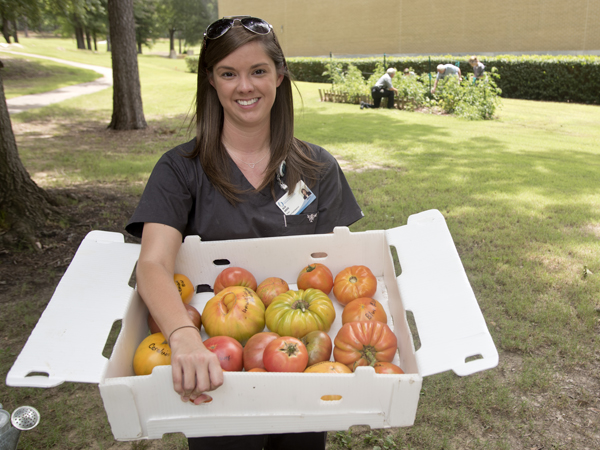
"Just watching these students stick their fingers in the dirt is amazing - they absolutely love it," Watson said. "It's an opportunity to take students from multiple disciplines and have them interact in a single environment toward a team-oriented goal."
A goal that should benefit citizens of the state for decades to come.
"Planting seedlings in pots and counting out seeds requires fine motor movement and exercises the mind," Watson said. "We have had students take that knowledge of how to do this and apply it to their patients in nursing homes and for people who are home-bound.
"Whether they are PT (physical therapy) or OT (occupational therapy), they can take this rehab model and figure out how to utilize therapeutic horticulture to accomplish their goals with their patients. It's really neat to see them synthesize their academics with where their patients are coming from to accomplish therapeutic goals."
Students and their future patients aren't the only ones who have been introduced to the benefits of horticulture by Blanton: SHRP faculty members have learned quite a bit from him, too.
"Many of these fruits and vegetables trigger a memory," Blanton said. When he prepared a pot of Lowdermilk Butterbeans for a staff holiday meal, "the faculty bypassed the store-bought turkey and dressing and cleaned out the pot.
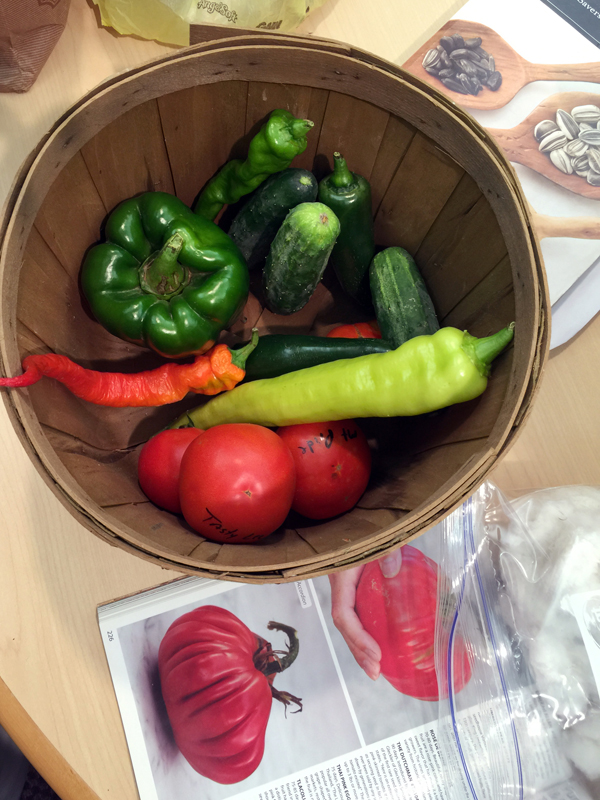
"They said, 'I can remember that taste from when I was a teenager growing up.'"
Blanton's therapeutic horticulture club also serves as a connection to those whose teenage years aren't so distant.
"When we're out planting seeds, digging in the dirt, perspiring together, the students don't see me in a police uniform," he said. "They see me as a human. That is very important.
"I see them in a different light, too, rather than just someone who will be going into a stuffy office or practice one day."
Although the SHRP garden is primarily focused on Heirloom Tomatoes this summer, there is plenty of room for club growth. Watson would like to add a small blueberry orchard later this year.
Faculty in the Occupational Therapy Program have asked Blanton and Watson to help teach horticulture's health-care benefits to their students. And the club will be highlighted in a chapter on therapeutic horticulture in an upcoming book by Carol Tubbs, associate professor of occupational therapy in the school.
It's amazing what a few small seeds can produce.
So after more than two decades of growing, sampling and swapping seeds, how is Blanton doing on his ultimate tomato quest?
"I have had some great ones," Blanton said, "but I haven't found the best one yet."
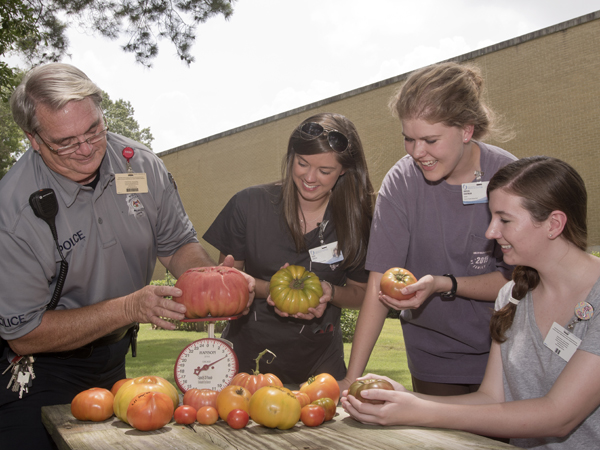
Tomato varieties found growing the SHRP garden:
- Anna Russian
- Cherokee Purple
- Dwarf Arctic Rose
- Dwarf Blazing Star
- Dwarf Mr. Snow
- Dwarf Sweet Sue
- Dwarf Wild Fred
- Eva Purple Ball
- Granny Cantrell's
- Mortgage Lifter
- New Big Dwarf
- Pink Berkeley Tie Dye
- Rosella Crimson
- Rosella Purple
- Sleeping Lady
- Summer Sunrise
- Summertime Gold
- Sweet Scarlet
- Tasmanian Chocolate
- Three Fat Men
- Wherokowhai
- Zogola


